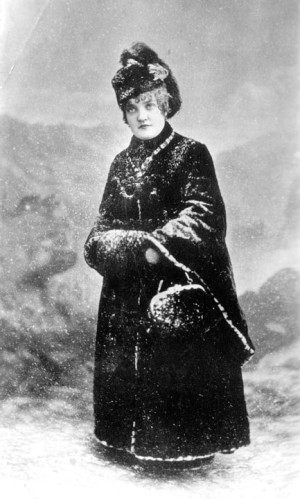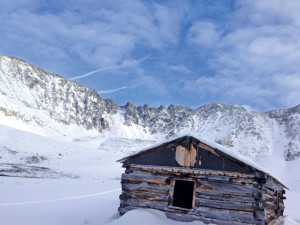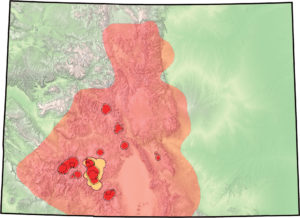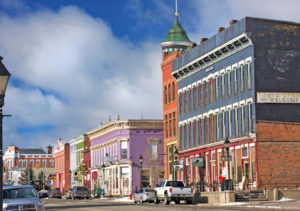By Jeffrey Runyon
A dictionary defines what a thing is – say, a mountain. Art teaches what that mountain means.
This may be similar to what Oscar Wilde meant in his 1889 essay, The Decay of Lying, where he suggests, contrary to long-held belief, that art does not imitate life, life imitates art – that perhaps the universe has meaning that art teaches us to see.
I sometimes wonder how much his visit to Leadville in 1882 affected his philosophy, and I met an old man in Ireland who seemed to wonder, too.
In 2010 a handful of students from Colorado Mountain College’s Leadville Campus, where I teach creative writing, composition and literature, joined my study abroad program bound for Ireland to experience literature for a month. The literary spirit thrives in Ireland, especially during May and June, when there are many literary festivities. (Ireland even has holidays devoted to literature, like Bloomsday.) So, when we decided to attend a literary tour through the city (i.e. pubs where famous writers like Joyce and Yeats wrote), we joined a large group trying to hear the old tour guide, who barely scratched the five-foot mark and whose voice seemed weak with age.
My students and I successfully jostled our way to the front to be nearer the guide – I was not going to let the size of the crowd deter the important work of education. He recited his tale in typical Irish fashion – that is, with total confidence and great style despite his wavering voice. He told of Oscar Wilde’s visit to the quintessential American West during his 1882 American lecture tour about aestheticism. I thought, I’ve heard this story before, but I had not. Here is my impoverished version of his story.
[InContentAdTwo]
During Oscar’s April visit to what he himself supposedly called “the high and lonely seat of the true Old West,” the tall, strong and colorfully dressed aesthete was lowered into the No. 3 shaft of the Matchless Mine for an authentic Leadville reception after his lecture to miners and prostitutes in the Tabor Opera House. Once he and the miners were all lowered deep down inside the mine, there was an attempt to get Oscar drunk on the local whiskey, which even at 10,000 feet was not, apparently, an easy thing to do. Attributed to his Irish origins, Oscar confidently outdrank the miners until every last one had passed out on the fines-covered floor. Thinking that fresh air would help them, or perhaps because he grew tired of drinking alone in the mine, Oscar piled their unconscious bodies (one in each arm, reportedly) onto the lift and brought them to the surface where, the next day, after recuperating, the miners admitted they had tried to get Oscar drunk and leave him in the mine, thereby killing him and ridding themselves of more lectures on aesthetics. Once they recovered enough, though, to realize his superior drinking skill, and at least partly because he chose not to leave them deep in their own mine blacked out, they claimed him a lifelong Leadvillian despite his dandy ways.
As the light of the genetic gift for storytelling faded from our guide’s eyes, he asked if anyone had ever heard of Leadville, Colorado, and when I looked at my students’ faces, I worried a little about his well-being. Would their excitement kill this kind old man? Would he drop dead with the shock of their answer? I was surprised to hear myself shout, YES! We live there! We’re from there! We go to school there!
With unembarrassed tears and a strong voice, he said that he had been giving this tour for over fifty years and that no one had ever even heard of Leadville, but that he continued to ask in the hope he would meet someone from what was obviously one his favorite stories.
Later, when the students turned their attention to other matters, he and I spoke a little. He asked me if I knew whether or not his story was still told in Leadville – and did I know if it was true.
There is little to corroborate the attempted-murder aspect of this story, and many simpler, more factual stories abound about Wilde’s visit to Leadville, though I have heard and read versions similar to the old man’s. The lecture at the Opera House, the reception in the mine, the drinking – all these seem to be facts about his visit. I told the old man I did not know what really happened back in April of 1882, but that his story still matters. We talked about what makes a story true. The details? The facts? What means more, the facts or the story?
It seems fair to suggest that the embellishing of details is a form of fiction, or art. To suggest that art might be the more powerful avenue to meaning or truth, maybe better even than facts, is perhaps too abstract for some of my readers, but I would encourage us to remember that history is always a re-creation, a story; and like an effective translation, it may stray far in the details yet retain and transmit the core meaning. What is truer: what really happened, or what it means to us?
Though Leadville does not seem to feature as prominently as it once did in the acts of history- and myth-making, still the symbiosis of fact and truth, of history and mythology, forms our stories and is integral to what the American West can mean. From the landmarks themselves, like the Tabor Opera House and the various mines, to the institutions of education, like the Colorado Mountain College campus for which I teach, discovering truth, or meaning, or sometimes maybe just meaningfulness, remains vital to the American West and to its heart here in the uplifted center of the Rockies – those actual mountains, as well as those in our stories and minds.
Jeffrey Runyon is associate professor of English composition, creative writing and literature at Colorado Mountain College’s Leadville campus. He has his BA in English language and literature with a minor in philosophy, his MA in literature and composition, and his MFA in creative writing with an emphasis in formal versification (poetry). He was hired in 2008 and does not plan to move out of the valley unless forced. Come talk about poetry with him. He will be around.




